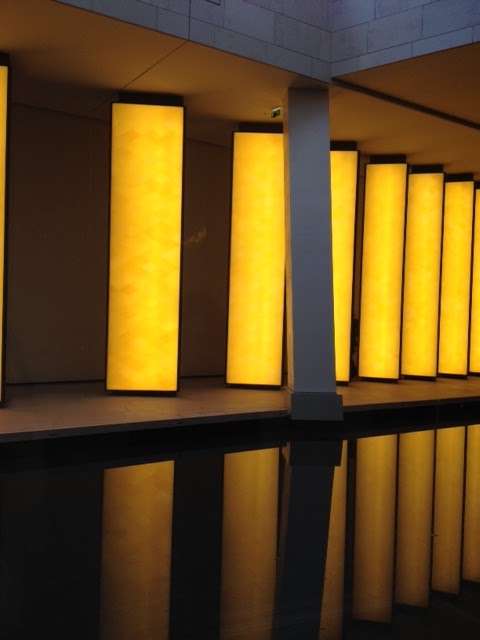An Argentine artist in Paris...
2:19 p.m.
Paris has a new attraction: the Fondation Louis Vuittton's Museum. By commission of Bernard Arnault, architect Frank
Gehry designed a space dedicated to Contemporary Art, big enough to house Arnault's permanent collection and also present temporary exhibitions.
View of the building - Jardin d’Acclimatation
Gehry Partners, LLP y Frank O. Gehry
View of the building - Detail of the grotto
Although the number of artists on display is still little, this inicial period since the opening has been dedicated to exploring the architecture. This is why several artists were asked projects that could dialogue with this one-of-a-kind building. For instance, Olafur Eliasson (Island/Denmark, 1967) placed, on an open hall, a series of mirrored panels (43 in total), which reflect the visitors and also the architecture... it works like a gigantic Julio Le Parc. The artwork generates a strange effect, like that of a kaleidoscope which diffuses the indoor and outdoor. In its own particular way, it captures the main characteristic of this state-of-the-art building: one can never fully tell if we are inside or outside.
Inside the horizon, by Olafur Eliasson (2014) - Detail
Materials: stainless steel, aluminium, LED lighting system, coloured glass, mirrors, yellow mosaics / Measures: 5.4 x5.2 x 91 metros
Location: Grotto
One of the galleries is dedicated to displaying the blueprints and documents of the development of the project. With this aim in mind, artist Taryn Simon (USA, 1975) was summoned. Simon's work usually implies the exploration of social or cultural phenomenons. In this case he used elements from the construction site, photos and drawings made by the workers.
A Polite Fiction, by Taryn Simon (2014) - Detalle
Materials: texts, photographies and objects / Variable measures
Location: Gallery 2
Location: Gallery 2
On the west terrace you'll see Where The
Slaves Live, a mysterious living sculpture by Argentine artist Adrián Villar
Rojas (1980). Done with a series of layers of organic and inorganic materials, the structure is supposed to modify itself as the organic layers will decompose or shift shape. It's like a water tank that represents a small planet that has landed on the building: a bridge between archeology and science fiction.
Where The Slaves Live, by Adrián Villar Rojas (2014)
Materials: found objects
The museum will open in three phases, from October 2014 till September 2015. Each opening or phase will be marked by an exhibition and the presentation of part of Arnault's extensive collection. This first chapter was dedicated to celebrate the architecture, that's why artists collaborated enhancing it, supervised by the close vision of the chief of this private venture.












0 comentarios